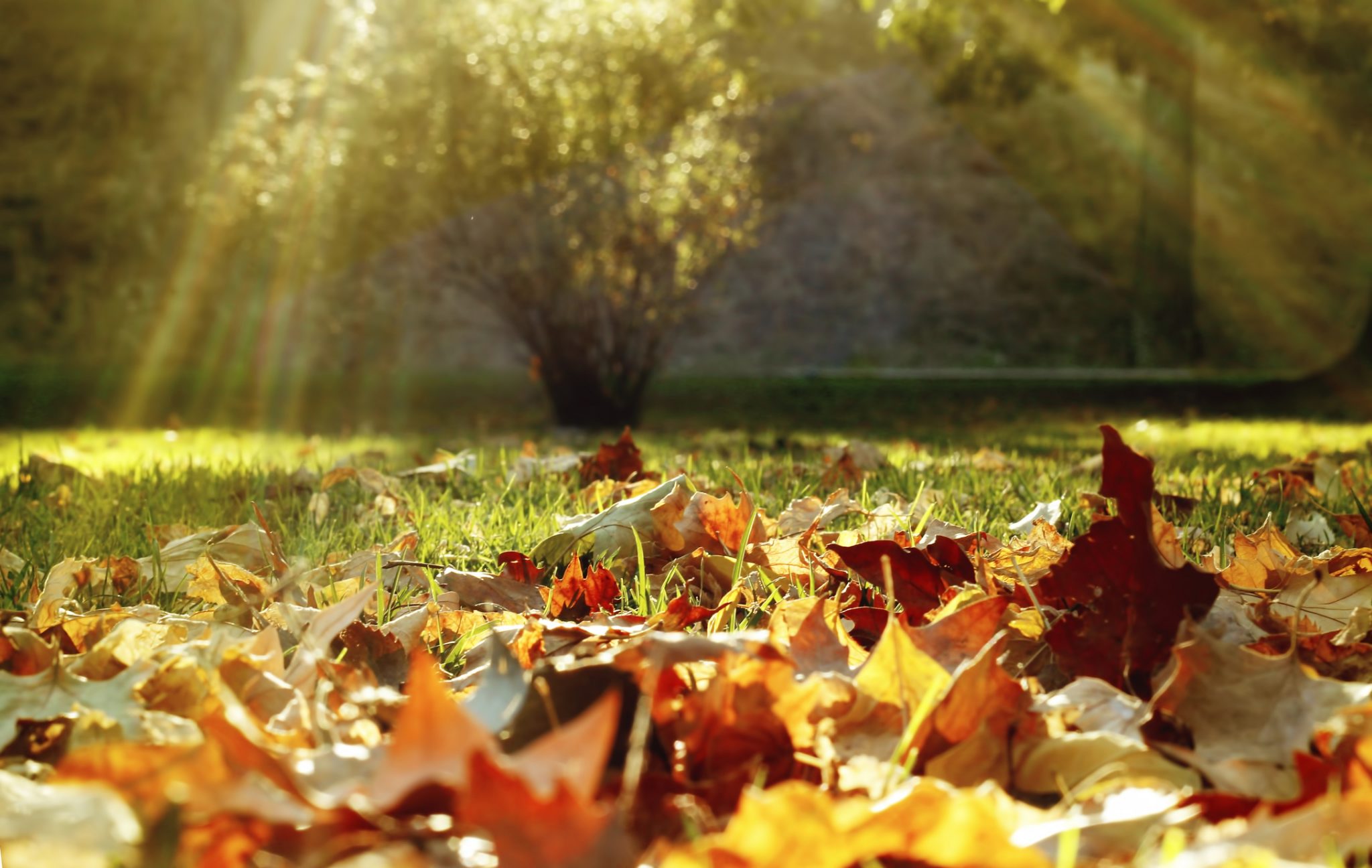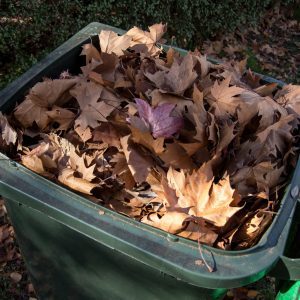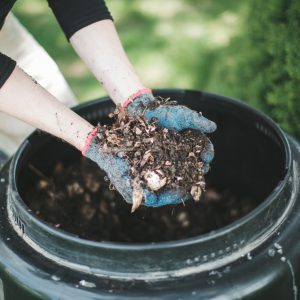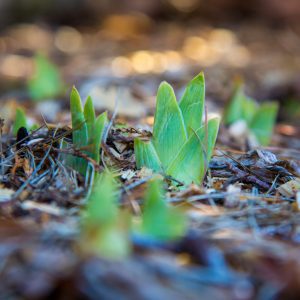Lawn & Garden

Learn the guidelines for recycling leaves for use as mulch or, in decomposed form, as compost for amending soil. Included are instructions on how to start a compost heap in autumn—and have enough decomposed matter to till into your garden in the spring.
Why Recycle Leaves?
- On-site resource stays on-site
- Compost is a valuable soil amendment
- Recycling reduces landfill waste
- Shredded leaves make great mulch
According to the US Environmental Protection Agency, Americans generate 292.4 million tons of municipal trash, or 4.9 pounds per person, per day (2018). We recycled and composted 94 million tons of this material (32 percent). In the same year, 10.5 million tons of landfill materials were yard waste that could have been composted or otherwise removed from the nation’s waste stream.
And while we should certainly celebrate the increased rate of yard waste composting (63 percent in 2018), there is still more we can do.
You can decrease the volume of trash in landfills and add a benefit to your yard at the same time. Recycle leaves and other yard waste for use as mulch or make compost for use as a soil amendment.
In heavily wooded areas, leaves should be left where they fall. This natural leaf litter breaks down over time and adds nutrients for plant growth. In managed landscapes, leaves make an excellent mulch for outdoor plants and shrubs. Whole leaves may be used, but you can reduce their volume
(to as much as one-tenth), and create a more uniform look by shredding or chopping them. Mulch conserves water, suppresses weeds, and moderates fluctuating soil temperatures that can disturb roots.
If your soil drains well (is sandy or loamy), spread up to 5 inches of chopped leaves on all garden beds and under all shrubs, hedges, and trees. This layer will settle down to 3 or 4 inches, the maximum application you can make without risking oxygen depletion in the soil. If your soil is predominantly clay, spread 2 to 3 inches for best results. By next autumn, when the next batch of leaves is about to fall, the previous year’s mulch will have decomposed almost completely.
Leaves can also be turned into compost. Compost is the product of the aerobic (in the presence of oxygen) biological decomposition of organic waste material under controlled conditions. Composting at home saves transportation and disposal costs and provides an environmentally sound way to manage yard waste. Composting offers you an opportunity to keep yard waste out of landfills and makes a valuable soil amendment from your on-site resources.
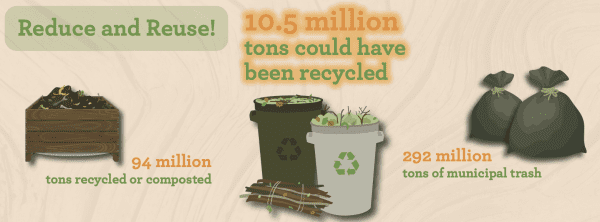
Reduce and Reuse!
10.5 million tons could have been recycled
94 million tons recycled or composted
292 million tons of municipal trash
If you have a compost bin, fill it with shredded leaves in the fall and keep any remaining leaves in a holding bin or in plastic bags stored nearby. Mix a few shovelfuls of soil or finished compost into the pile at the beginning of the process to add microbial decomposers. As leaves settle in the bin, add another bag or two of shredded leaves. Adding sources of nitrogen, such as vegetable scraps, grass clippings, or a cup of a nitrogen fertilizer, to your compost encourages decomposition.
By spring, all leaves should be in the bin and decomposing into rich compost. Turn the compost periodically, and by early summer, it is ready to use as mulch or for tilling into a garden. Compost improves any soil for growing summer plants.
If you don’t have a bin, you can create a compost heap, which is simply a free-standing pile of leaves. A good, workable size is about 3 feet wide and 3 feet high. The size can vary according to the amount of leaves used.
A good location is important for a successful compost pile. The bin or pile needs good drainage, and water should be readily available. The compost pile should not be located against wooden buildings or trees, since wood in contact with compost may decay. If you notice strong odors from your compost pile, you probably need to turn it. Odors associated with composting are generally due to insufficient oxygen, too much nitrogen, or too much water in the pile.
A compost pile made up of nothing but whole leaves does not need turning. Leaves will mat together and slowly decompose in about 2 years. If you want to speed up the process, shred the leaves and turn the pile monthly. This brings the most decomposed material at the bottom to the top and shifts the least decomposed material to the hot, bottom layer of the pile. Add some water each time you turn the pile. The compost is ready to use when it is dark and crumbly like rich soil.
For the latest facts and figures about materials, waste, and recycling, visit the United States Environmental Protection website.
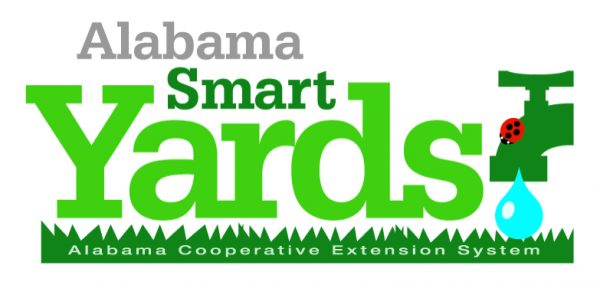
 Revised by Kerry Smith, Extension Administrator, Outreach Program, Horticulture. Originally written or revised by Smith, David Williams, former Extension Horticulturist, James O. Donald, former Extension Agricultural Engineer, William D. Goff, former Extension Horticulturist, and Tony A. Glover, former County Extension Coordinator, all with Auburn University.
Revised by Kerry Smith, Extension Administrator, Outreach Program, Horticulture. Originally written or revised by Smith, David Williams, former Extension Horticulturist, James O. Donald, former Extension Agricultural Engineer, William D. Goff, former Extension Horticulturist, and Tony A. Glover, former County Extension Coordinator, all with Auburn University.
Revised August 2021, Recycling Leaves, ANR-0692

